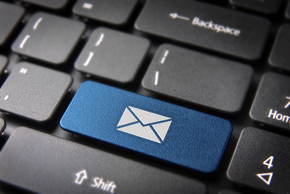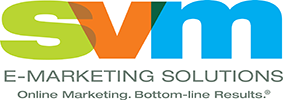CALL US TODAY: (877) 786-3249 x3
Schedule a Strategy Session
 Why do so many industrial and B2B companies fail with email marketing? In my opinion, it’s because they do not understand the proper role of email in the B2B marketing mix.
Why do so many industrial and B2B companies fail with email marketing? In my opinion, it’s because they do not understand the proper role of email in the B2B marketing mix.
All too often, companies make the mistake of treating email as a prospecting tool — sending unsolicited emails to people they don’t know, about products that are of no interest to them. In other words, they are spammers. Another shortcoming occurs when companies use broadcast email only as a sales tool — blasting offers and promotions to customers, often in a non-targeted way. While this may produce a few sales hits here and there, it’s not the best way to build relationships with customers.
To be truly successful with email marketing, think of email as a nurturing tool — a tool for growing and strengthening existing relationships with customers and prospects who have reached out to you. One of the best ways to nurture relationships with email is by producing an educational email newsletter. Email marketing with a monthly e-newsletter offers you an opportunity to build an ongoing, interactive dialogue with your B2B customers and prospects in a measurable, cost-effective way. Not only can an e-newsletter demonstrate value to your customers, but also it can change your customers’ perception of your business.
By sending timely articles that solve current business problems, you show your customers that you understand them and their needs. This repeatedly reinforces their importance to you and builds their trust in your company.
To ensure your email newsletter is a successful business-building tool, I recommend you leverage the following five best practices.
The key to effective email marketing lies in a notion known as “permission marketing.” Your email newsletter should build goodwill with your customers, not annoy them. Therefore, you should obtain permission from your customers and prospects before adding them to your email marketing mailing list. Make sure you have an obvious email signup form on your every page of your Website.
Also, any time you speak with a customer or prospect, let them know about the value they will get from your email newsletter and ask permission to add them to your list.
Your email newsletter is not for you – it’s for your customers. You need to focus less on your company and more on the issues and ideas your customers are interested in. I like articles that focus on “how to” tips, best practices and actionable strategies. To help get you started, the following are examples of customer-focused email newsletter content:
Make sure your articles are short and scannable. The best email newsletter articles are between 500 and 750 words of text. Also, people often scan information online before they read it in detail, so make your articles easy to scan by breaking up the text into manageable chunks and use bullet points and bolded headers to highlight important content.
Even though the focus of your email newsletter is to educate customers and prospects, this is a great opportunity to present them with relevant offers to generate leads and sales or encourage Website visits.
Don’t use your personal email account for email broadcasts. An email marketing campaign management system will help you automate the entire process of building your lists, designing and delivering your messages and measuring the success of your campaigns.
Lower-end systems, like Constant Contact, provide great base-level capabilities at an affordable price. Higher-end systems, like MailChimp, provide more advanced capabilities like dynamic content, automated trigger emails, advanced reporting, etc.
Or, if you want to outsource the entire process, a capable online marketing agency can manage this process for you, providing a turn-key solution for your entire B2B email marketing campaign.
As with all marketing activities, you must measure success to see how well you performed in the past, as well as identify actionable strategies to improve your results in the future. When using an email marketing campaign management system, you will have access to great reports that will allow you to track the key metrics to measure the success of your email marketing campaign.
In addition, a great way to find out if your e-newsletter is a success is to regularly ask your customers for feedback. By asking for feedback, you will be able to know what’s working and what’s not working so you can fine-tune and improve your content.
